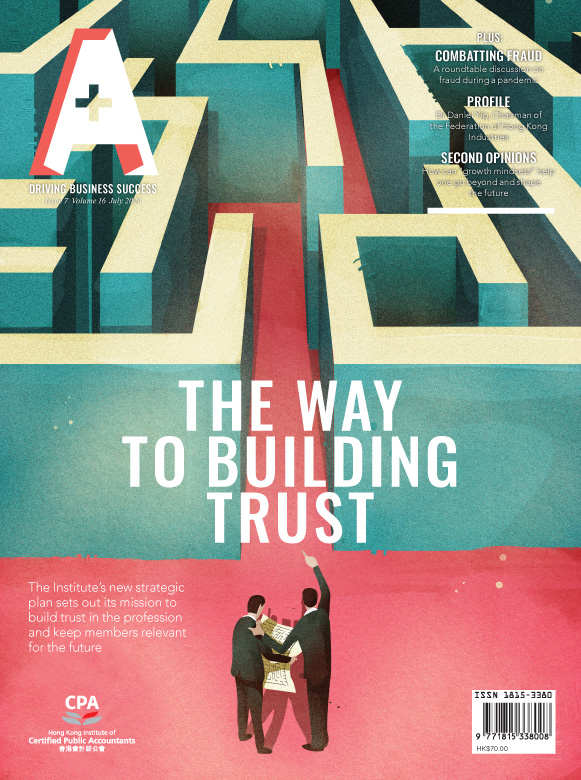Over the past two years, we have seen a growing interest from financial markets in the impact of sustainability factors – referred to by the acronym “ESG” (environmental, social and governance) – on business value both in the short, medium and long term. Regulatory activity in this space has also gained momentum globally. Notable actions in Hong Kong include the release of the updated Hong Kong Stock Exchange ESG Reporting Guide in December last year, the establishment of the Green and Sustainable Finance Cross-Agency Steering Group by seven financial regulators and government bureaux in May this year and most recently, the Hong Kong Monetary Authority’s publication of a white paper in July outlining initial thoughts on the approach to supervising climate-related as well as broader sustainability issues in the banking sector.
The emergence of climate change and resource scarcity as megatrends coupled with a shift to long-term thinking is driving investors to seek clear non-financial data and ask more questions in search of better risk-adjusted returns. This helps to push sustainability up the agenda of companies’ boards – ideally leading to greater integration of ESG into business strategies and enterprise risks. To stand out to investors, companies, particularly those listed, need to understand the importance of systematically and consistently communicating their strategies, targets, actions and performance.
Integration of ESG
Proactive engagement is necessary. However, there is a clear gap between sustainability professionals and investors perhaps best exemplified by the defining parameters for materiality. While investors focus on financial materiality, sustainability professionals follow best practice as defined in industry reporting frameworks and guidelines to identify materiality through an environmental and social impact lens. As directors respond to investors, there is a danger that the financial materiality perspective may dominate the approach to managing and mitigating ESG risks and embracing related opportunities. To bridge this gap, sustainability professionals need to encourage the full integration of ESG into the enterprise risk management (ERM) process through the following steps:
- Align the sustainability reporting timeline with the ERM timeline. Allow the sustainability team to bring ESG materiality assessment results to the table as part of the overall ERM discussion.
- Think of your role as a facilitator within this process. Work to bring clarity and context, linking relevant sustainability factors to identified enterprise risks.
- Bring a long-term view. Connect today’s actions to future scenarios.
- Work with the risk owners. Widen their perspective and understanding of relevant sustainability issues and potential challenges they may face.
- Co-create potential mitigation plans with risk owners. Support them in their implementation of these plans.
- Document the business case for prioritized ESG risks. Throughout the process document information including an overview of the risk, the causes, potential responses, roles and responsibilities and implementation timeline. This documentation provides a reference that can be used to communicate clearly with investors on the actions being taken to protect and/or create value for the business.
This approach works to bridge the materiality gap by highlighting the ways that ESG risks, which may not be financially material at face value, may have indirect effects on the ability of the business to safeguard value and achieve its strategic objectives. It has the added benefit of widening the scope of the risk conversation at the highest levels to include sustainable value creation in relation to employees, business partners, communities where companies operate, customers and other stakeholders. In the process, it also encourages internal alignment on the commitments, responsibilities, targets, the purpose and the value that sustainability brings to the overall business and to the individual business units.
Global frameworks
Sustainability professionals adopt standardized frameworks to provide consistent data points comparable across peers and over time. The numerous disclosure frameworks and guidelines, such as the Global Reporting Initiative, the recommendations of the Task Force on Climate-related Financial Disclosures, and the International Integrated Reporting Framework complement each other. Whichever framework is adopted, it is simply an avenue to systemically and transparently disclose and communicate the continuous work to measure and manage different risks and identify and capture opportunities while being mindful of the interests of a wide range of stakeholders including shareholders.
As investors ask questions related to non-financial metrics, ESG and sustainability take on new urgency and importance with decision-makers at the highest levels. Integrating ESG into business strategies and enterprise risks will provide companies with the tools to manage changes emerging in volatile, complex and uncertain times.














